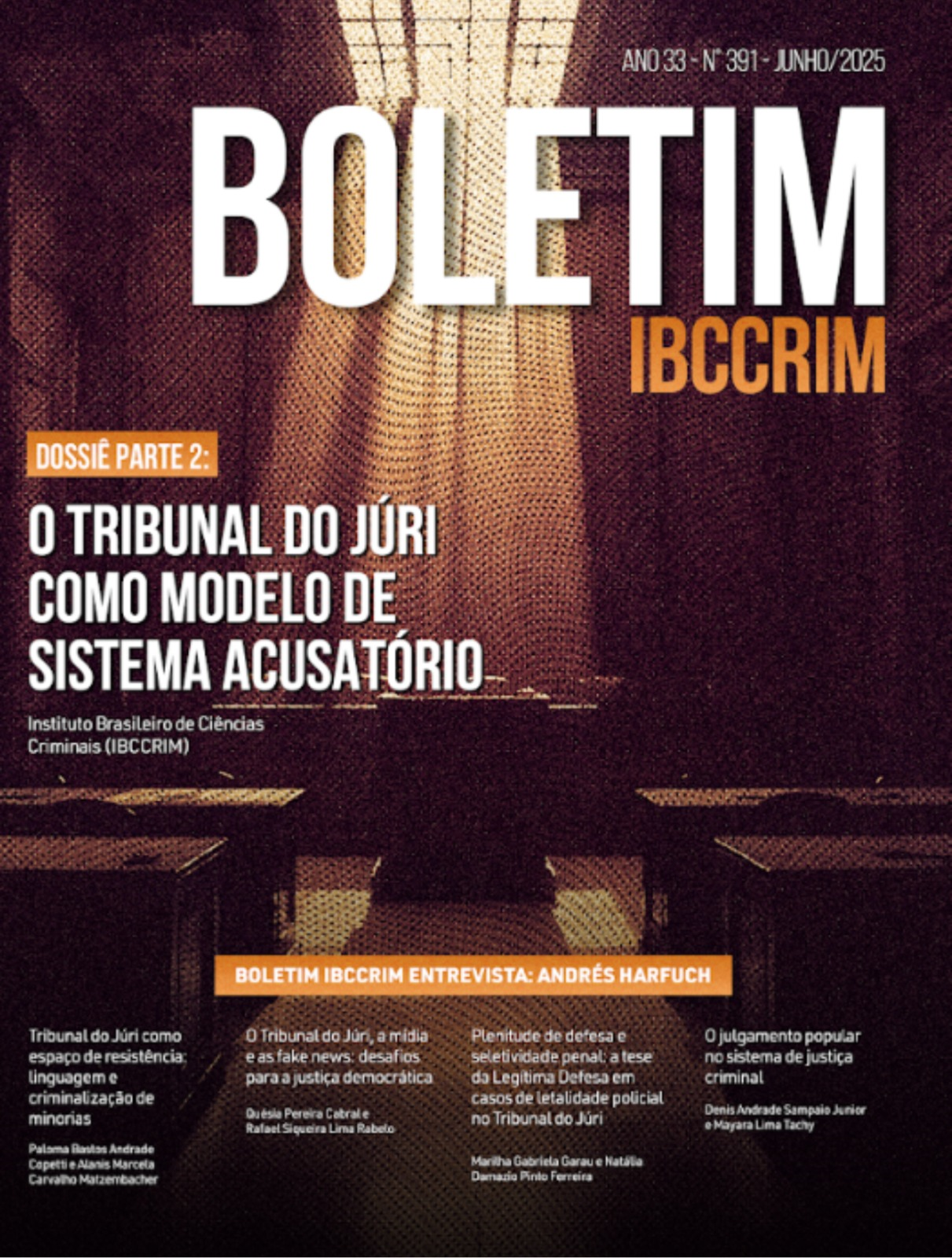The Jury Trial as a Model of the Adversarial System
Views: 22DOI:
https://doi.org/10.5281/zenodo.15497406Keywords:
Jury Trial, Adversarial system, Criminal procedure, Democratic justice, Judicial legitimacyAbstract
Since Uruguay adopted the adversarial system in 2017, Brazil has become the only country in the Americas to retain an inquisitorial criminal procedure. This editorial addresses the Brazilian Judiciary’s legitimacy crisis and proposes the Jury Trial as a paradigmatic model for democratizing criminal justice. By emphasizing features such as orality, publicity, community participation, and the sovereignty of verdicts, it argues that the jury is the most advanced expression of the adversarial system in Brazil. The editorial advocates for its expansion and strengthening as a necessary step to overcome the authoritarian legacy that persists in national criminal procedure.
Downloads
Publication Facts
Reviewer profiles N/A
Author statements
- Academic society
- Instituto Brasileiro de Ciências Criminais
- Publisher
- IBCCRIM
References
BIDERMAN, Ciro; ARANTES, Rogério Bastos. Justiça criminal no Brasil: funcionamento e legitimidade. Revista Brasileira de Ciências Criminais, São Paulo, v. 111, p. 185-214, 2015.
GRECO, Luís. O sistema acusatório e o juiz do processo penal. Revista Brasileira de Ciências Criminais, São Paulo, v. 106, p. 9-34, 2014.
INSTITUTO DE PESQUISA SOCIAL, POLÍTICA E ECONÔMICA (IPESPE). A democracia que temos e a democracia que queremos: pesquisa IPESPE – dezembro de 2024. 2024. Disponível em: https://ipespe.org.br/a-democracia-que-temos-e-a-democracia-que-queremos-pesquisa-ipespe-dezembro-2024/. Acesso em: 14 abr. 2025.
LOPES JR., Aury. Direito processual penal. 20. ed. São Paulo: Saraiva, 2023.
Downloads
Published
How to Cite
Issue
Section
License
Copyright (c) 2025 Instituto Brasileiro de Ciências Criminais

This work is licensed under a Creative Commons Attribution-NonCommercial 4.0 International License.
Copyright of published articles belongs to the author, but with journal rights over the first publication and respecting the one-year exclusivity period. Authors may only use the same results in other publications by clearly indicating this journal as the medium of the original publication. If there is no such indication, it will be considered a situation of self-plagiarism.
Therefore, the reproduction, total or partial, of the articles published here is subject to the express mention of the origin of its publication in this journal, citing the volume and number of this publication. For legal purposes, the source of the original publication must be consigned, in addition to the DOI link for cross-reference (if any).


 Português (Brasil)
Português (Brasil)
 English
English
 Español (España)
Español (España)






